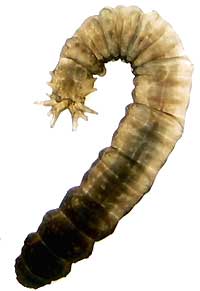The calendar here in the MRCN office was a pretty scary looking thing for the month of April. We had educational presentations and volunteer events all over the place! My two favorites involved two very different groups of people: college students and 10 year olds.
On April 10, MRCN hosted a group of students from the University of Missouri as a part of their event "Caring for Columbia." That morning, over 400 students were assigned to nonprofit organizations throughout the community for a day of service. Our 20
 students had a pretty good deal considering that it was an absolutely gorgeous morning. We had them marking storm drains with plastic decals in a Columbia subdivision.
students had a pretty good deal considering that it was an absolutely gorgeous morning. We had them marking storm drains with plastic decals in a Columbia subdivision.Storm drains in Columbia- like almost EVERY CITY IN THE COUNTRY- do not lead to a water treatment facility! They flow right into our creeks and streams. In order to educate citizens and prevent illegal dumping, the decals read "No Dumping. Drains to Stream." The students helped us affix over 50 decals to storm drains, in addition to delivering pamphlets about the decals to nearby households. They also collected two bags full of trash!
On April 27, we met with a completely different group of students for a completely different mission. The Callaway County Soil and Water Conservation District was holding a field day for 4th grade classes throughout the county. We had a booth that was all about macroinvertebrates! After first telling th
 e students that these bugs are actually GOOD to have in the water, we did a little hands-on game to learn about water quality monitoring. The students had to search under rocks in our "streams" to find "macros." Once they found one, they had to identify it, determine if it is pollution sensitive or tolerant, and then report their finding to the group reporter. Once their streams had been tallied, they were able to determine whether or not their stream was healthy or polluted.
e students that these bugs are actually GOOD to have in the water, we did a little hands-on game to learn about water quality monitoring. The students had to search under rocks in our "streams" to find "macros." Once they found one, they had to identify it, determine if it is pollution sensitive or tolerant, and then report their finding to the group reporter. Once their streams had been tallied, they were able to determine whether or not their stream was healthy or polluted.While they seemed to enjoy this, the real fun began when we pulled out vials with the real things! There were many shouts of, "Eww!" "Cool!" and "What is that?" Hopefully none of them were permanently traumatized by the giant cranefly larva...
Enough blogging for now! No rest for AmeriCorps!



















